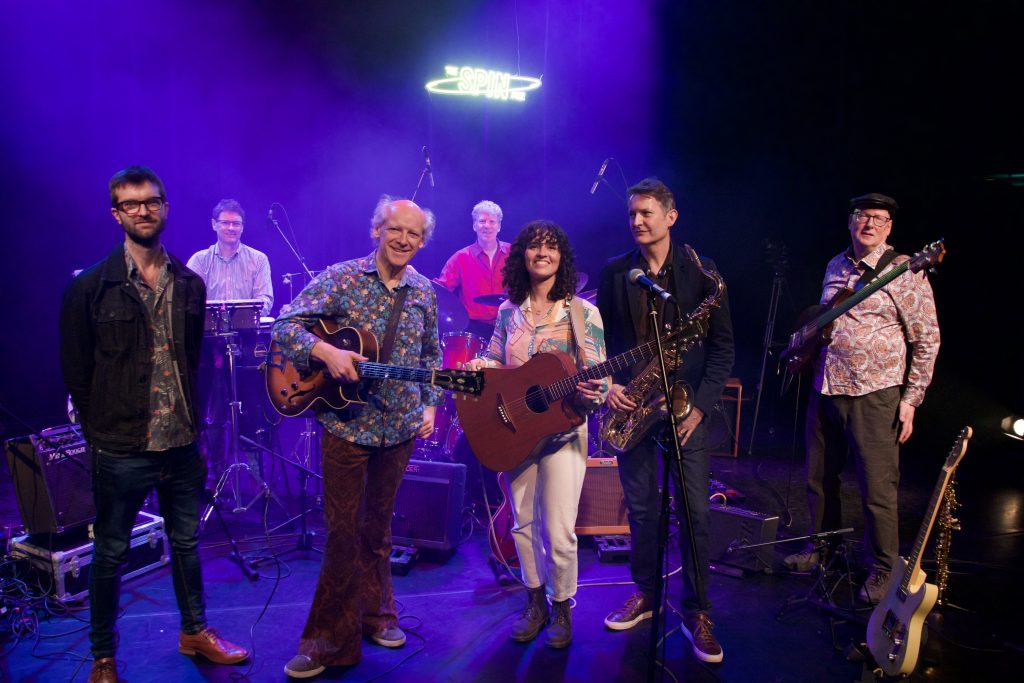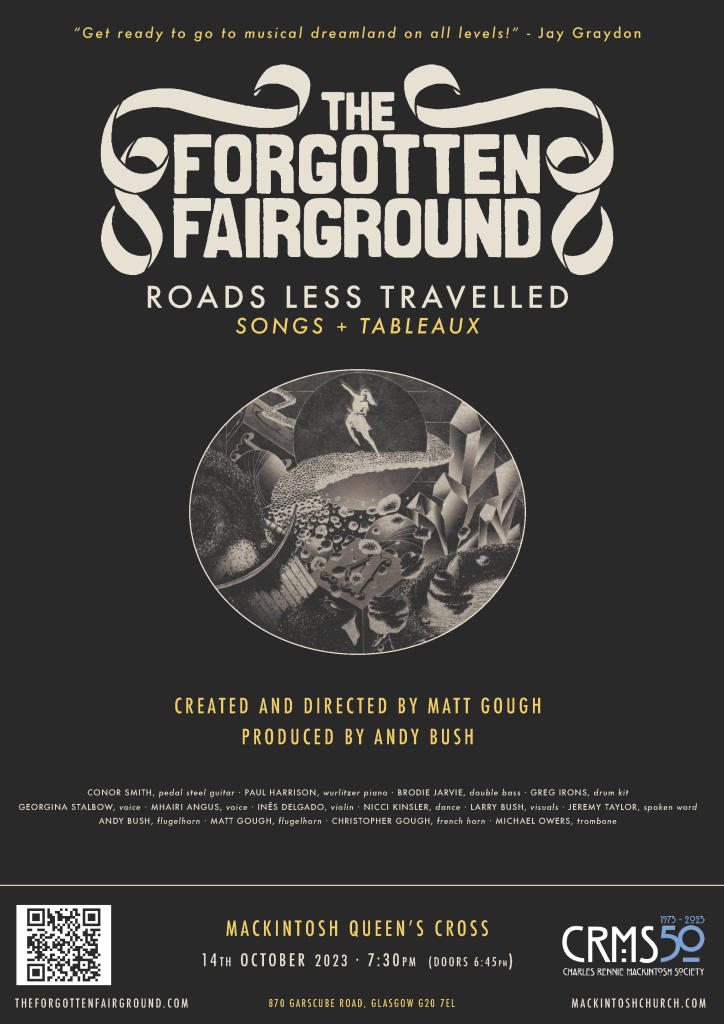Mackintosh Symposium: Heritage under Threat
Mackintosh’s Glasgow and Beyond: Building the Case for Preservation
Mackintosh Queen’s Cross: 6 & 7 June 2024
The symposium is time critical in drawing awareness to the plight of our beautiful Heritage.
————————————————————————————————————
Tickets for the Symposium are available from Eventbrite and cost £45 per day or £70 for both days (includes lunch & refreshments)
Virtual tickets for the Symposium cost £15 per day
————————————————————————————————————
The Mackintosh Society has done much in its 50 years of existence to champion, preserve and safeguard the work and heritage of Charles Rennie Mackintosh. Sadly, since the last symposium in 2012 we have seen an apparently growing disregard for our built heritage, through neglect, bad planning and lack of action and investment by councils and government. It is therefore crucial not to repeat the destructive mistakes of the past and take bold action to reverse this decline.
Glasgow’s heritage is a unique selling point for the city and the importance cannot be overstated; it plays a powerful role in shaping distinctive, vibrant, prosperous places and contributes substantially to health, education and civic pride. It also sustains neighbourhoods as attractive places in which people wish to live, work and play.
Although Glasgow’s architectural landscape may be unique in Scotland, its challenges are not. Across the UK, policy makers are attempting to strike a balance between preservation of historic buildings and the housing crisis that has engulfed major cities. It is a tension that is unavoidable, and we must ensure that it does not lead to unchecked erosion of our past.

Day 1 will cover the current restoration work at Scotland Street School and The Hill House, the uncertain future of the Lighthouse and Martyrs’ School, plus the ongoing work to rebuild the Mackintosh Building at the GSA. We will also cover major issues and challenges facing the wider heritage of the city.
Speakers on Day One include:
Restoring, Managing and Repurposing Queen’s Cross Church
Stuart Robertson
Director, CRM Society
A historic overview of restoring, managing and reinventing a repurposed church of significant architectural merit.
By the 1970s as the population declined Queen’s Cross could not continue as a viable church and in 1976 the congregation merged with that of nearby Ruchill Church. The following year the Charles Rennie Mackintosh Society stepped in to save the building and negotiated a 21-year lease from the Church of Scotland. In 1999 the Society was able to purchase Queen’s Cross as a result of a generous donation from Dr Thomas Howarth.
‘Mackintosh Architecture: Context, Making and Meaning’ – the project and its legacy
Joseph Sharples
Curator of Mackintosh Collections
& Applied Art: The Hunterian
The University of Glasgow’s Mackintosh Architecture project was completed in July 2014 with the launch of the website www.mackintosh-architecture.gla.ac.uk.
The research project, which ran from 2010 to 2014, was led by The Hunterian at the University of Glasgow and was funded by the Arts and Humanities Research Council. It aimed to provide the first authoritative survey of the architectural work of Charles Rennie Mackintosh.
Mackintosh Buildings Survey – Update
Brian Park: Retired Conservation Architect
John Sanders: Partner at Simpson & Brown Architects
In 2016 the Society completed a major survey of the surviving Mackintosh built heritage. This was a landmark achievement and the first comprehensive condition survey of the Mackintosh built heritage and an important milestone in our understanding and preservation of Mackintosh’s legacy.
The central aim of the Survey was to determine the current condition of a range of prioritised Mackintosh buildings and related works, including interiors and gravestones, within public and private ownership. The survey work was undertaken by Simpson & Brown Architects and Page\Park Architects and was led by the Society’s director Stuart Robertson and board member Pamela Robertson, former Professor of Mackintosh Studies at the University of Glasgow.
Scotland Street School: Reuse and Repair
Mandy Fallens BSc(Hons), BArch, RIBA
Senior Architect at Glasgow City Council
The Scotland Street School project is currently on site with a first phase of external fabric repair works, including roof repairs and lead work. The building was in use solely a museum since 1990, but has been closed to the public since 2020. Part of the project brief is the reintroduction of an education function in the form of an early years facility for 3-5 year olds on the ground floor. We will discuss the challenges of incorporating an early years facility into the 1906 Category A Listed Building to meet the current curriculum standards, and provide an overview of the ongoing fabric repair works, building investigations and surveys.
The Hill House: Not judging a Book by just its Cover
Liz Davidson:
Project Director: The Hill House
At the Hill House – Mackintosh and Macdonald fused architecture and artistry to create a happy family home for the Blackie family. With little alteration that home now welcomes thousands of visitors each year. But the technical and fabric problems of the construction emerged relatively shortly after its completion in 1904. In 2019 the Box was erected to cover and allow time for its considered repair. This presentation will assess this strategy and the timeline for a major conservation project to start – and complete – in time for the anniversary year in 2028.
Bringing Back the “Mack”
Eleanor Magennis:
Director of Estates and Infrastructure at The Glasgow School of Art overseeing new Digital and Estates Strategies including the faithful reinstatement of the Mackintosh building.
Rescuing Mackintosh at the Willow
Stewart Brown:
Retired Architect
Key steps in rescuing a building under threat and redeveloping it through restoration to become a commercial (and social and educational) enterprise.
Glasgow Museums Collections & Rescued Civic Heritage
Alison Brown:
Curator, European Decorative Art and Design from 1800 to present
Glasgow Museums and Collections
Over the last thirty years Glasgow Museums have had opportunities to restore the Ingram Street Tearooms interiors for exhibition or for collaborative loan, but the civic collections also home lesser-known heritage items removed from buildings now lost to us or before conversion to other use: stained glass, interior panelling, furniture and fittings, etc. When there are no such things as elastic walls, what are the most important considerations and roles in the 21st Century for museum collections regarding built heritage?
Glasgow’s at Risk Heritage – the Broader Scene
Niall Murphy:
Director, Glasgow City Heritage Trust
The talk will focus on important Glasgow buildings (not by Charles Rennie Mackintosh) under threat including potential reuse and redevelopment. This will include updates on the work Glasgow City Heritage Trust funds to provide sustainable pathways off Scotland’s Buildings at Risk Register for various Glasgow Buildings along with projects the Trust has helped fund repairs to, and our concerns for the ageing heritage building stock within the Glasgow Central Conservation Area.
Thomson’s lost Buildings and those at Risk
Scott Abercrombie & Fiona Sinclair:
The Alexander Thomson Society
Founded in 1991. The Alexander Thomson Society works to promote and safeguard the works of the Scottish architect Alexander ‘Greek’ Thomson.
………………………………………………

On Day 2 the focus is on International and UK cities including Brussels & Manchester and organisations such as 78 Derngate that have managed to buck the trend and have enjoyed success in their heritage led regeneration.
Speakers on Day Two include:
Conserving C20 Architecture: Hearts and Minds vs Bricks/Concrete and Mortar
Catherine Croft:
Director, 20th Century Society
Conserving C20 architecture needs more than just vigorous campaigning for individual buildings. Changing the over-arching narrative, and debunking negative myths and preconceptions is just as vital. How can we best support a positive climate for preserving the recent past and what are the primary challenges for ensuring a successful future for C20 heritage?
The Transformation of 78 Derngate, Northampton
Rob Kendall:
Chair of Friends of 78 Derngate
In January 1998, 78 Derngate Trust was formed with the main aim of restoring the terraced house, which was designed and remodelled by Charles Rennie Mackintosh in 1916. The Trust setup a Friends organisation with the main aim of meticulously restoring the property and opening it to the public. 78 Derngate along with 80 & 82 has undergone an amazing transformation, ensuring that visitors can easily navigate through the three houses and their gardens.
How Greater Manchester can build the future without destroying its past!
Elizabeth Hopkirk:
Save Britain’s Heritage
SAVE Britain’s Heritage is an independent charity that has been campaigning against the destruction and neglect of historic buildings of all types and ages for nearly 50 years.
Its most recent report, Boom Not Bust: How Greater Manchester can build the future without destroying its past, is a celebration of the region’s fine historic buildings – and an urgent call to arms. Elizabeth will highlight recent losses and examples of re-use as a catalyst for sustainable regeneration and civic pride.
Brussels, capital of Art Nouveau?
Simon Thielen:
Urbanism and Heritage Advisor
Office of Ans Persoons
Secretary of State for the Brussels Government, responsible for Urban Planning and Heritage, European and International Relations
In 2023, Brussels celebrated Art Nouveau, 130 years after the construction of the Hotel Tassel by Victor Horta, now a UNESCO World Heritage Site. The event was a huge success, with over a million visitors. The presentation will take stock of the making of this Art Nouveau year, based on a range of expertise and experiences developed in Brussels: the BANAD Festival (which showcases Art Nouveau and Art Deco), collaboration between the various public bodies including the Horta Museum, the Art and History museum, the organisation of Heritage Days, links with other Art Nouveau cities in Europe (and the RANN), links with contemporary creation, links with colonisation and an update on the Stoclet Palace, an emblematic World Heritage building marking the transition between Art Nouveau and Art Deco, which remains closed to the public today. The ambition of this Art Nouveau year was not an end in itself, but rather the first stage of affirming Brussels as capital of Art Nouveau.
The Engineers View
Graeme DeBrincat:
Arup Associate | Façades UK Materials | Reuse & Reclaim
The consulting engineers Ove Arup and Partners are one of the major contributors to the look of modern cities, with projects such as Sydney Opera House, The Pompidou Centre and the Lloyd’s Building to their credit.
Through a series of 20th Century building refurbishment projects across the UK, Graeme will explore the new and developing technologies of the time applied to these buildings and consider how they have performed over time, how these important buildings have been upgraded and refurbished and what the future holds for these buildings.
Please note that the symposium programme is subject to change.
———————————————————————————————
Tickets for the Symposium are available from Eventbrite and cost £45 per day or £70 for both days (includes lunch & refreshments)
Virtual tickets for the Symposium cost £15 per day











